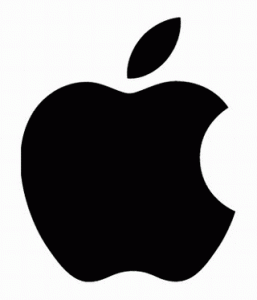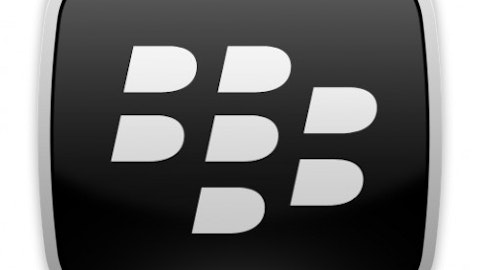
There will always be power users who concern themselves with megahertz and megapixels. And of course, tomorrow’s cell phones will be faster, thinner, and better than today’s. But smartphones have saturated the market so thoroughly that most of today’s consumers are not worried about numbers.
Without data to impress, phonemakers are devising new and innovative features to sell devices. I’ll take a look at Samsung and Apple Inc. (NASDAQ:AAPL), the world’s biggest cell phone producers, to compare their approach to implementing and marketing new features
Samsung
Samsung‘s flagship smartphone, the Galaxy, is the closest anyone’s ever come to an “iPhone killer.” Samsung has sold more than 50 million S3s, and its successor, the S4, is the fastest selling smartphone in Samsung’s history.
The Galaxy’s success stems from a few basic ingredients. First of all, it features a big, beautiful screen that dwarfs the iPhone’s. Secondly, it included the latest-and-greatest version of Android, which featured significantly more polish than previous iterations. And finally, it wasn’t an iPhone — consumers who didn’t want to buy into Apple’s ecosystem had a worthy alternative.
The phone also includes a multitude of cool features. One of the most lauded is near-field communication, or NFC. Consumers can make “no-touch” payments using their phone! Another is wireless charging; just sit your phone on a special pad and it will charge through special magnetic induction.
Of course, the majority of consumers never use these features. NFC-enabled registers are uncommon the U.S., and wireless charging isn’t very useful when the wireless charger needs a wire. It’s this kind of feature-packing that wastes time and money for a company like Samsung.
Instead of devising a dozen “bleeding-edge” features that most consumers won’t use (but will be lauded by the tech press), the company would do well to focus on the elements that have driven its success so far; a beautiful, impressive display, tight integration with Google‘s Android, and a manufacturing cost that enables resellers to discount it periodically.
Although the S4 has seen impressive sales so far, Samsung is at a crucial juncture in developing the follow-up; many criticized the S4 for providing only iterative improvements over the S3. The company will need to devise a way forward that can incorporate the “Wow!” that the S3 induced without devolving into a collection of little-used features. Its choices thus far put that future into question, making it a questionable long-term buy.
Apple
Of course, Apple Inc. (NASDAQ:AAPL) is just as guilty of over-hyped features. When VP Phil Schiller introduced Siri in 2010, he billed it as the “coolest feature” of the new iPhone 4S — the “best thing yet” for the company’s flagship phone. Back then Siri was awfully cool, and fairly useless. Apple has developed the technology since then, and for many Siri has become the personal assistant Apple Inc. (NASDAQ:AAPL) originally billed her as. It just took a few years.
Still, Apple Inc. (NASDAQ:AAPL) has a good history with introducing useful and, more importantly, usable features. The Passbook app, debuting with iOS 6 last year, was initially a little weak, but rapid adoption by airlines has made it a popular choice for travelers. Smart decisions like making tickets accessible from the lock screen make the feature eminently more usable.
The iPhone 4’s “Retina” display is another great example of the company’s marketing decisions. Where many phone makers might have billed the display as “ultra-high resolution” or “HD,” Apple made it human, saying the screen reached the maximum level of detail that the human retina could perceive. While dubious, the claim hit home with consumers, who flocked to Apple stores to try it out.
Still, Apple Inc. (NASDAQ:AAPL)’s reluctance to depend on features also means that it is sometimes reluctant to innovate. The 4S was dinged for lacking 4G connectivity, a problem obvious to consumers whose Android phones sped ahead. And the 5, while increasing screen size vertically, still looks tiny next to many Android phones.
The iPhone 5 was the fastest-selling phone Apple has ever offered, and put a dent in Android’s explosive growth — driving Apple Inc. (NASDAQ:AAPL) shares to a mind-blowing $705.07 the month it debuted. But while the company’s stock tempts at historic lows, it might be wise to watch for the next version of the iPhone to decide if you’ll take the plunge.
The bottom line
Both companies are at important points in developing their product sets. With the U.S. smartphone market nearly saturated, the developing world is the next battleground, and there Samsung’s focus on price could provide a leg up.The company’s success so far with the Galaxy, as well as its low-cost tablets, make it a safe buy in the short and medium-term.
Apple has undeniable cache with consumers, and with rumors of a low-cost iPhone swirling, the company has the potential to make a splash in the new market. I’m eagerly awaiting Apple Inc. (NASDAQ:AAPL)’s next big event in June to see what they have in store for the iPhone — and I think you should too.
The article Apple vs. Samsung: Battle of the Features originally appeared on Fool.com and is written by Steven Yenzer.
Steven Yenzer owns shares of Apple. The Motley Fool recommends Apple. The Motley Fool owns shares of Apple. Steven is a member of The Motley Fool Blog Network — entries represent the personal opinion of the blogger and are not formally edited.
Copyright © 1995 – 2013 The Motley Fool, LLC. All rights reserved. The Motley Fool has a disclosure policy.
